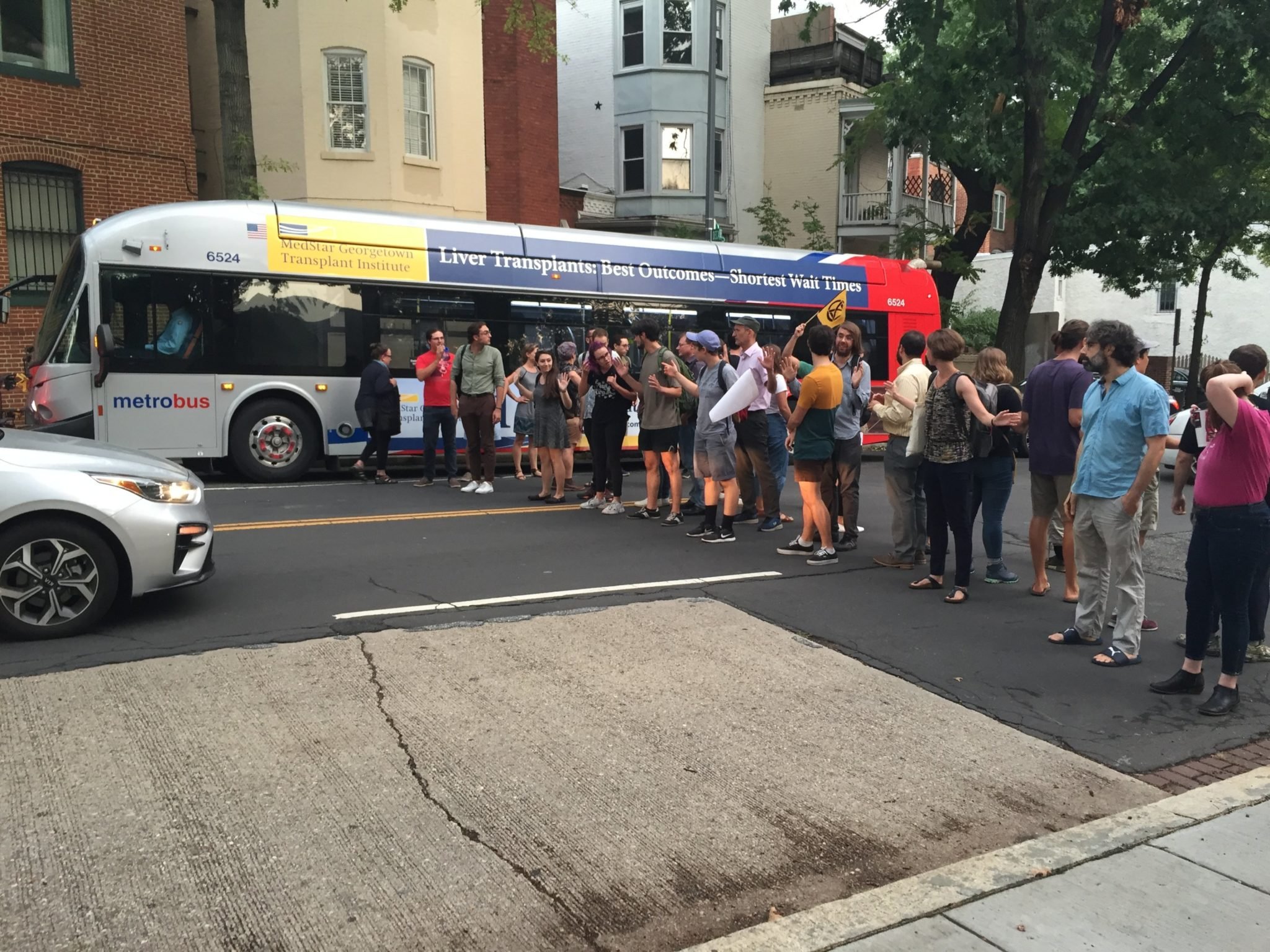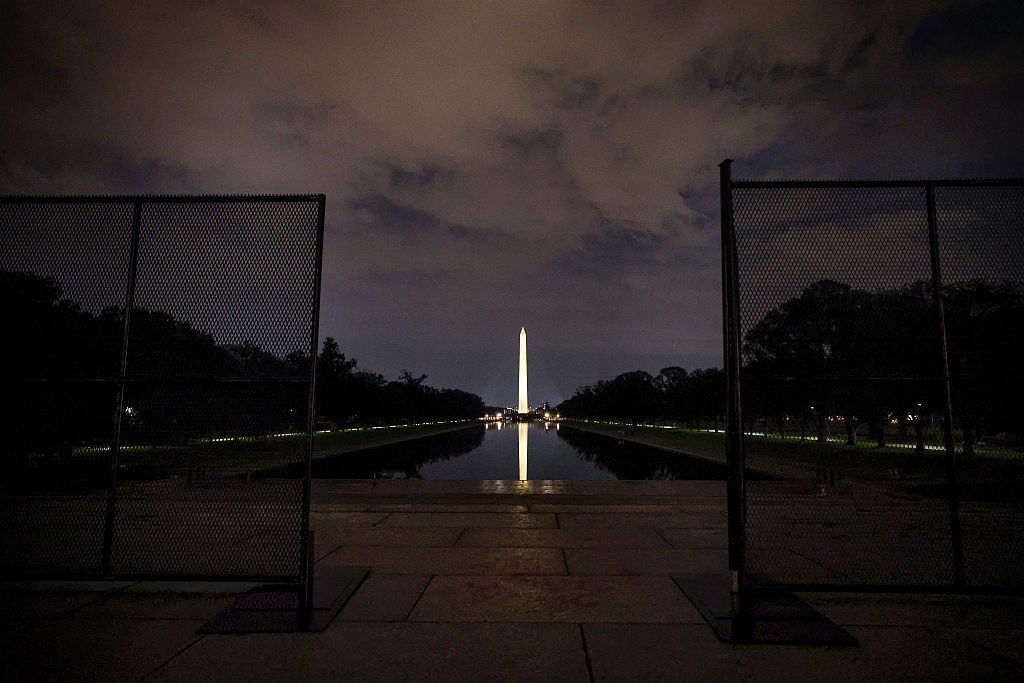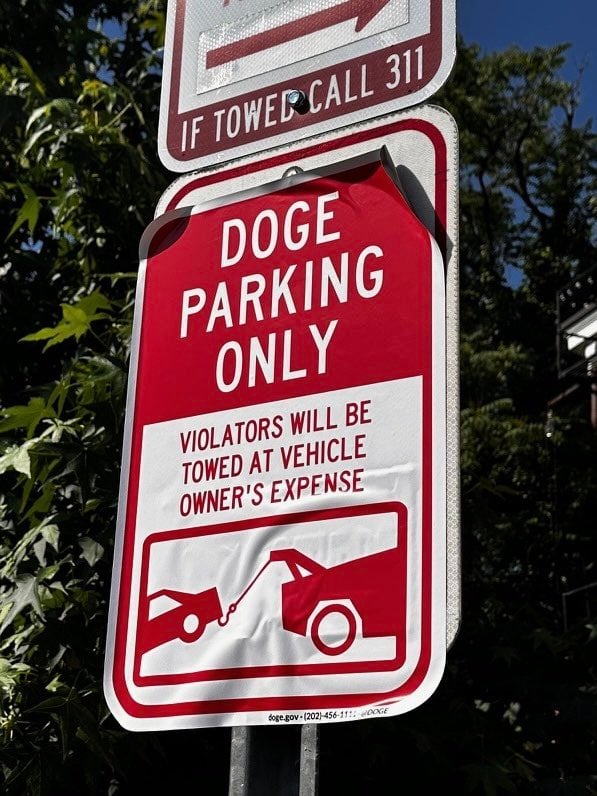On Wednesday night, dozens of protestors choked off traffic on Florida Avenue between R and S streets. Chanting, “The earth is on fire! Put the fire out!” they ignored the blaring of car horns, the frustrated glares from neighborhood residents, and verbal threats from drivers along the lines of “fucking move or I’ll smack the shit out of you.”
After five minutes, the group returned to the Friends Meeting House to reflect on the experience and continue planning for a larger version of the protest.
The road-blocking exercise was a sliver of what the group, which operated under the name Shut Down DC, hopes to accomplish in DC on September 23. The activists, according to their press release, have vowed to “bring traffic and business as usual to a standstill” by “seizing key intersections” in the name of climate change awareness.
The romantic idea of taking total control over the power center of the country is not a new concept; many have tried, and failed, to shut down the nation’s capital. An action in May of 1971—which Shut Down DC organizer Patrick Young cites as an inspiration—led to the largest mass arrest in US history after authorities got hold of the group’s detailed tactical manual and sent police forces to key sites in advance.
Young says his group is trying to avoid that same mistake by decentralizing any kind of power, instead breaking the larger cohort into roughly 24 “affinity groups” that will operate as their own independent units under the larger “Shut Down DC” umbrella. “We don’t need to have somebody who’s in charge if we can all take responsibility for what we’re doing and if we can all communicate with each other about what’s happening,” he says. “[That way], everybody is able to take leadership.”

Of course, this model also presents opportunity for confusion. Case in point: the group’s stance that emergency vehicles and drivers in an emergency should be allowed through the protest lines wasn’t communicated to protestors before they were hustled into the street to stop traffic during Wednesday night’s practice run. When a man exited his car to inform a lead protestor he was trying to visit his wife in the hospital, the protestor just kept smiling and chanting. “Fuck all of you,” yelled the driver as he got back into his car. “I hope you all have husbands and wives and I hope they get sick and you can’t visit them,” he said, laying on his horn with a fury.
Shut Down says its blockades are being strategically placed to impact the most powerful in DC: the intersections chosen will all be near places of money or power; the group is staying out of the way of public transportation.
All the same, anyone who actually lives in DC knows that there’s no way to block traffic for just the coal-industry lobbyists and the Trump administration EPA appointees. Which brings up the question: How is infuriating people en route to visit spouses in the hospital—or merely trying to get to the office on time—going to help the cause?
Young, a 35-year-old who works as a research analyst for a DC-based non-profit, has spent 15 years organizing climate change-related actions with the group Rising Tide. He says he recognizes that many of DC’s “working class communities” will be affected and inconvenienced on September 23. He says he’s able to morally justify this by reminding himself that, in DC, delays and disruptions occur all the time. “This is a community that is not unfamiliar with major events happening in town, whether it’s inclement weather, the pope coming to town, or a parade if the hockey team wins the Stanley Cup,” he says. “Working class people and people of color are dealing with disruption every single day. What’s different about the 23rd is that people of power are going to deal with the disruption too.”
Young says creating major havoc is the only way to get people in power to pay attention and enact change. The group has adopted the US Youth Climate Strike platform as their overarching demands, which include a Green New Deal, a halt in any and all fossil fuel infrastructure projects, and declaring a national emergency on climate change. Young says the group will continue to shut down the city until these demands are met, with some affinity groups promising to re-strike as early as October 7. “We’re way past [allowing] a reasonable amount of time [for Congress to act],” he says. “There’s a climate crisis and the serious action on climate justice is well past due. The Amazon is on fire, the icebergs are melting, there’s no time to wait.”
At a Shut Down DC informational meeting, attendees were told that protesters didn’t plan to apply for permits to protest and would not publicly share where they would take action. Still, those locations were out in the open at the gathering on Wednesday, which was a public meeting and had been advertised in a press release. Organizers not only shared three of the intersections they hope to block, they also presented a map of key target areas. Massachusetts Avenue and North Capitol, New York Avenue and I-395, and 2nd Street, Southeast, and Independence Avenue were all named intersections. Other targets include the ICE headquarters near 12th and D streets, Southwest, 6th Street intersections between Rhode Island Avenue and the Mall, Capitol Hill, and just north of the White House.
When contacted for comment about the specific targets, a spokesperson declined comment.

So far, organizers told attendees at the meeting, the group has roughly 250 individuals confirmed to participate and 500 more that have expressed interest.
That might sound like a lot, but consider that it took roughly 50 people to block one comparatively minor intersection for five minutes Wednesday night. The ultimately unsuccessful Nixon-era shutdown that Young cited as an inspiration saw roughly 12,000 protestors arrested.
Even those committed to protesting seem to be operating on a divided front. Complaints were brought up Wednesday that the majority-white space didn’t consider the experiences and concerns of people of color or people with children before throwing them into the street to protest. Some said the experience of actually being in the road, not just talking about it, made them reconsider their stance on participating.
“I couldn’t look at the drivers’ faces,” said one woman as she left the road. “Even though I know what we’re doing is right, I hate inconveniencing people.” “It just feels like groupthink,” one man said, reflecting on the driver who had been kept from visiting his hospitalized wife. “There doesn’t seem to be any concern for the individual. It doesn’t seem like we’re really going against the people in power by doing this—why has nobody brought this up?”


















